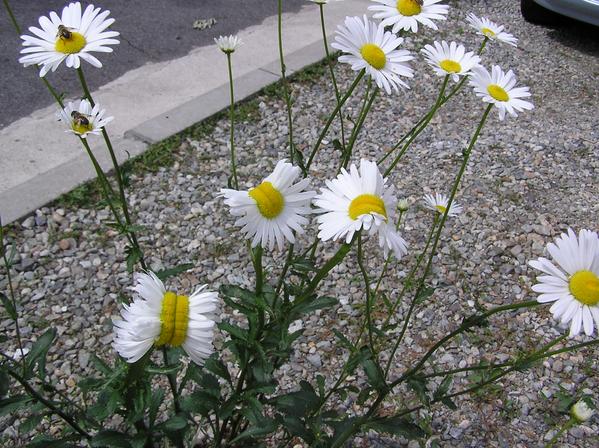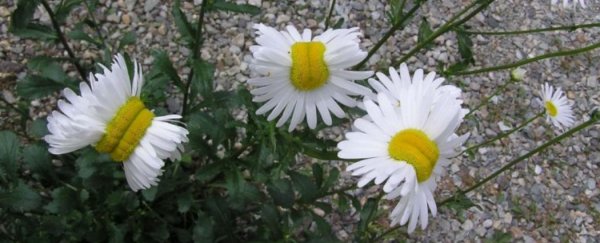Photographs of deformed daisies have been posted to Twitter, four years after the devastating 2011 Fukushima nuclear incident in Japan. Taken by Twitter user @San_kaido on July 21 in Nasushiobara city, which is about 110 km from Fukushima, the images have people suggesting that the deformities were caused by radiation leaked from the three nuclear power plants that melted down following a colossal tsunami.
The deformities recall those of butterflies found in Fukushima last year, with a 2014 study noting that a population of local butterflies had experienced size reduction, slowed growth, high mortality, and morphological abnormalities following the disaster. But the fact that this type of deformity can occur naturally in these plants casts doubt on the assumption that it's linked to the effects of radiation. And according to a 2009 study, radiation-induced fasciation in wild plants is extremely unlikely.
Fasciation - otherwise known as cresting - is a rare mutation that can affect the stem, root, flower head, and sometimes even the fruit of over 100 species of vascular plants around the world. The mutation manifests in the plant tissue as a flattened, ribbon-like, crested, or contorted shape, just like how the yellow centres of the daisies in the image above and below have been elongated and split in half.
It's not clear what the cause of the mutation is, but genetic, hormonal, bacterial, fungal, viral and environmental causes have all been put forward. Interestingly, the cause might not be same across all cases. One theory is that fasciation is caused by a hormonal imbalance that can stem from a random genetic mutation or be induced by bacteria, fungi, virus, insects, or perhaps even radiation. This means in some cases, the mutation will be passed on, and in others, it won't. Scott Morris explains at Garden Toobox:
"It should be noted that just because a plant has fasciation, it doesn't mean it will still be affected when it dies and comes back the next year - there's no guarantee. In many cases it has been reported that plants are 100 percent fine the following year and show no sign of being fasciated, especially in perennial plants. Do bear in mind, that if the cause is genetic, there is a strong chance of reoccurrence and you may very well have to dispose of the plant completely."
 @San_kaido
@San_kaido
The case against the Nasushiobara daisies being the result of Fukushima radiation comes from a 2009 study by researchers at Japan's National Institute of Agrobiological Sciences, published in the Journal of Experimental Botany:
"The proportion of plants showing stem fasciation increased with gamma-irradiation … Each single mutant also showed stem fasciation at a low frequency without gamma-irradiation, while gamma-irradiation induced stem fasciation. Importantly, in wild-type plants, the frequency of stem fasciation was very low (
Unless the specific daisies are tested, we won't know for sure what the case is. But we're going to put it down to coincidence that mutated daisies happened to crop up in Nasushiobara city till we see more convincing evidence that they are the result of Fukushima radiation.
 @San_kaido
@San_kaido
